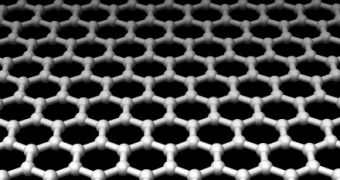Graphene is showing off its wonder material properties yet again, this time actually demonstrating, or being demonstrated to, have what it takes to liquefy.
Granted, liquefy might not be the correct word, since graphene is more of a molecular compound than anything else, so terms like solid, liquid and gaseous don't really apply at that level.
Nonetheless, when speaking of a compound that is supposed to revolutionize technology by taking the place of silicon, and a lot of other materials, that it would be solid is the first assumption.
This isn't so far from the truth, for graphene in its 'base' form at least, but some folks at the University of Cambridge discovered a very unusual way for graphene to be turned into CMOS transistors.
Normally, it takes large, multi-million-dollar machines in factories to create computer circuitry.
Graphene could render many of them completely unnecessary by being turned into a polymer ink which is then run through a conventional inkjet printer.
That is exactly what it sounds like: graphene ink can apparently be used to print CMOS transistors through the same process that, over the years, has spawned pages and pages and pages of printed paper.
If the Cambridge researchers pull this off properly, graphene will be easy to use as part of wearable, transparent, easily bendable computer circuitry.
To make the ink a possibility, graphene has to be chipped off a block of graphite using a chemical solvent.
“This paves the way to all-printed, flexible and transparent graphene devices on arbitrary substrates,” says Andrea Ferrari, leader of the project.
After that, the large chips have to be removed (they might block print heads if they are left there) and only then the material is used to produce the ink.
There were other recent milestones in this field, like stretching transistors, significantly boosted battery efficiency and groundbreaking sensors, to name a few.

 14 DAY TRIAL //
14 DAY TRIAL //